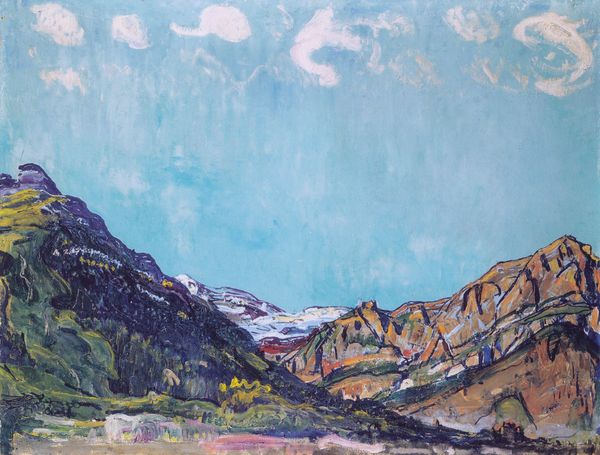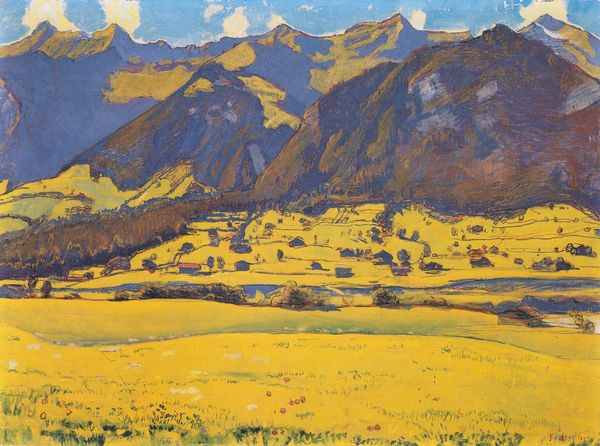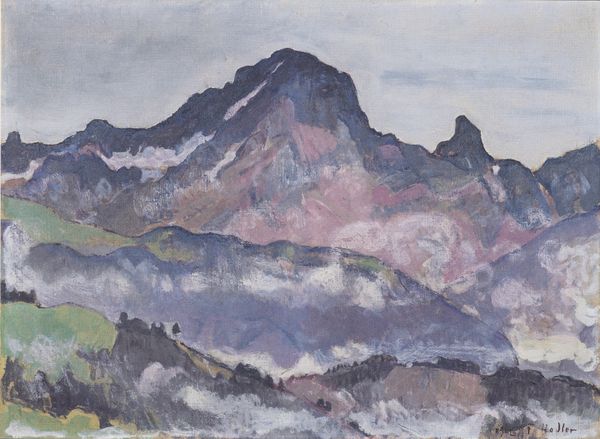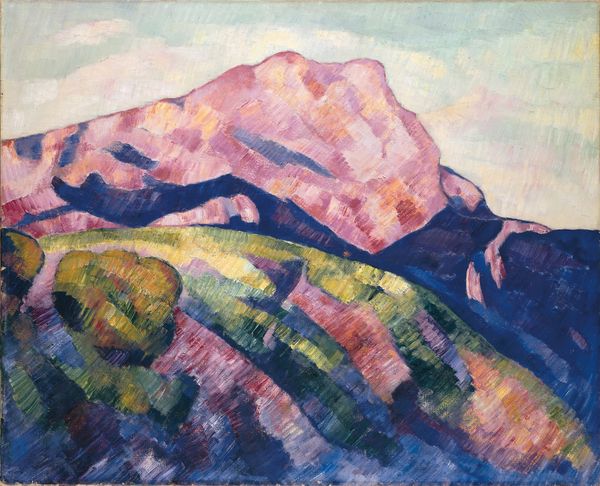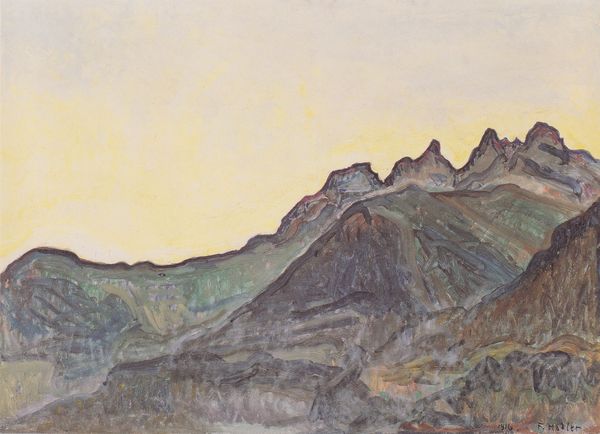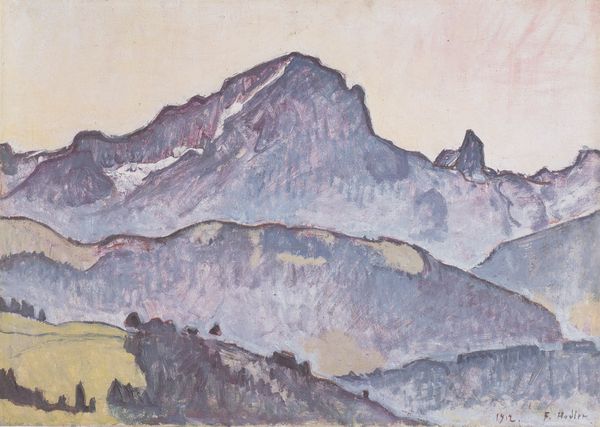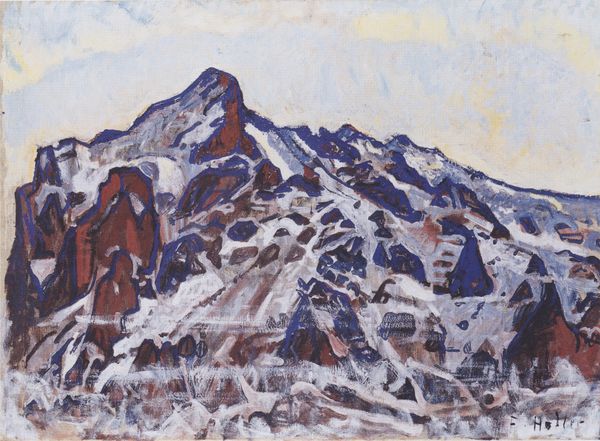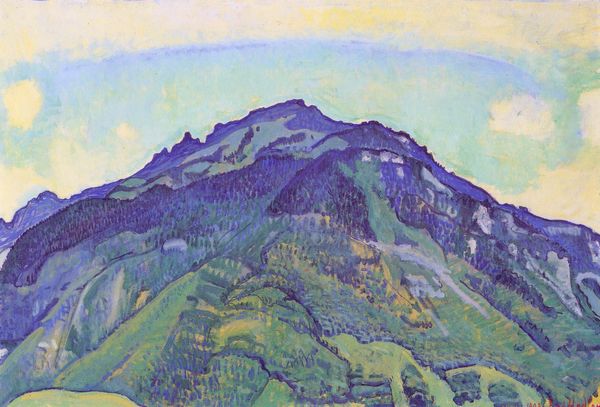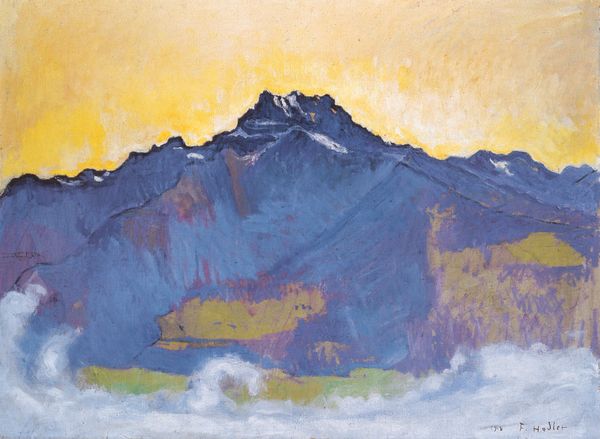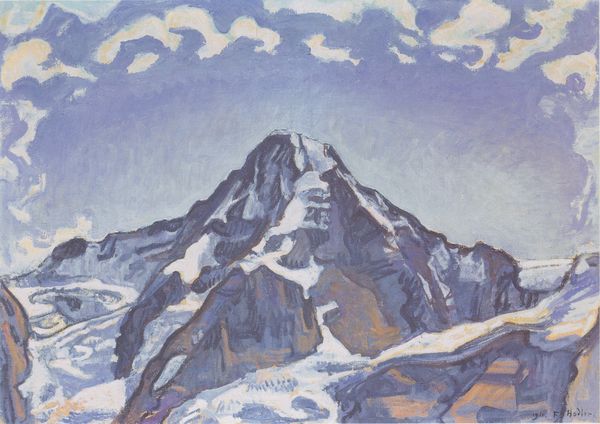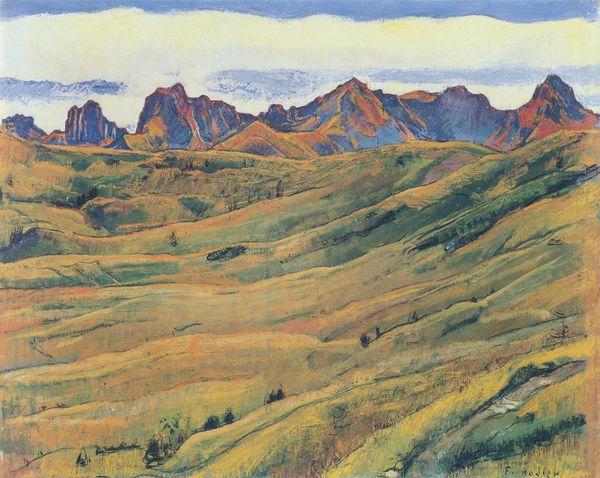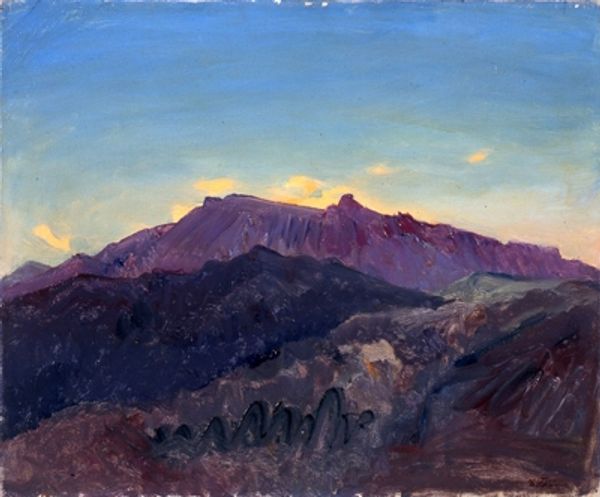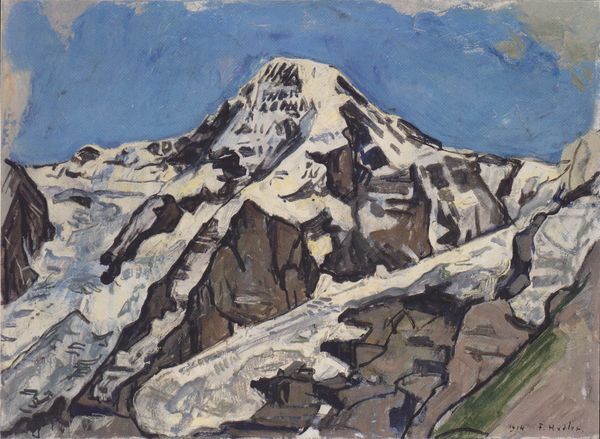
Dimensions: 64 x 90 cm
Copyright: Public domain
Curator: Looking at Ferdinand Hodler’s “The Dents Blanches in Champéry at the Morning Sun,” painted in 1916, what’s your initial read of it? Editor: The immediate impression is one of…stark monumentality. The mountain range dominates the canvas, yet there’s this incredibly tactile quality to the paint application that softens what could be overwhelming. Curator: Indeed. Hodler’s landscapes often grapple with themes of universal harmony, achieved in part through what he termed "parallelism"–the repetition of forms and colours to evoke a sense of unity. Notice how the angled peaks mirror one another, and the colors flow seamlessly? Editor: Right, and consider the oil paint itself, applied almost in thick slabs. The materiality here is essential. It’s about more than just depicting a scene; it’s about the labor, the physicality of the painting process itself, isn't it? One can almost sense Hodler's engagement with the raw elements. Curator: Absolutely. The brushstrokes are almost like geological strata. We see how Hodler employs colour to signify form, yet it seems that colours become blocks which are as heavy as stones composing that very impressive composition of that specific Swiss massif. It speaks volumes about Hodler’s attempt to go beyond conventional impressionistic representation to find something of a new, solid image. Editor: The landscape is rendered here, not so much from scientific rendering perspective as through layers upon layers of materiality and a direct approach with very simple but strong colours. In looking at this, I find myself wondering about the context, how it resonates with labor – the mining, the physical work associated with this terrain and region and beyond that with early impressionists’ dedication to *plein-air* artwork making. Curator: Yes, painting *en plein air* required dedication and even hard work, even physical exertion if we consider weather conditions or hiking. Though here, there’s a turn toward something far less representational, or documentary – which also is achieved through careful deployment of color and formal composition. Editor: This is what the eye is drawn to the artist’s deliberate engagement with form, labour and material processes rather than straightforward depictions of nature’s visual marvel. It's the transformation of paint into an emotional landscape that strikes me most powerfully. Curator: A fascinating synthesis of artistic vision and material grounding, creating a work both deeply moving and deeply thought-provoking. Editor: Yes, an emotional experience. An excellent instance where our respective approaches help expose the many facets of an impressive landscape painting.
Comments
No comments
Be the first to comment and join the conversation on the ultimate creative platform.
